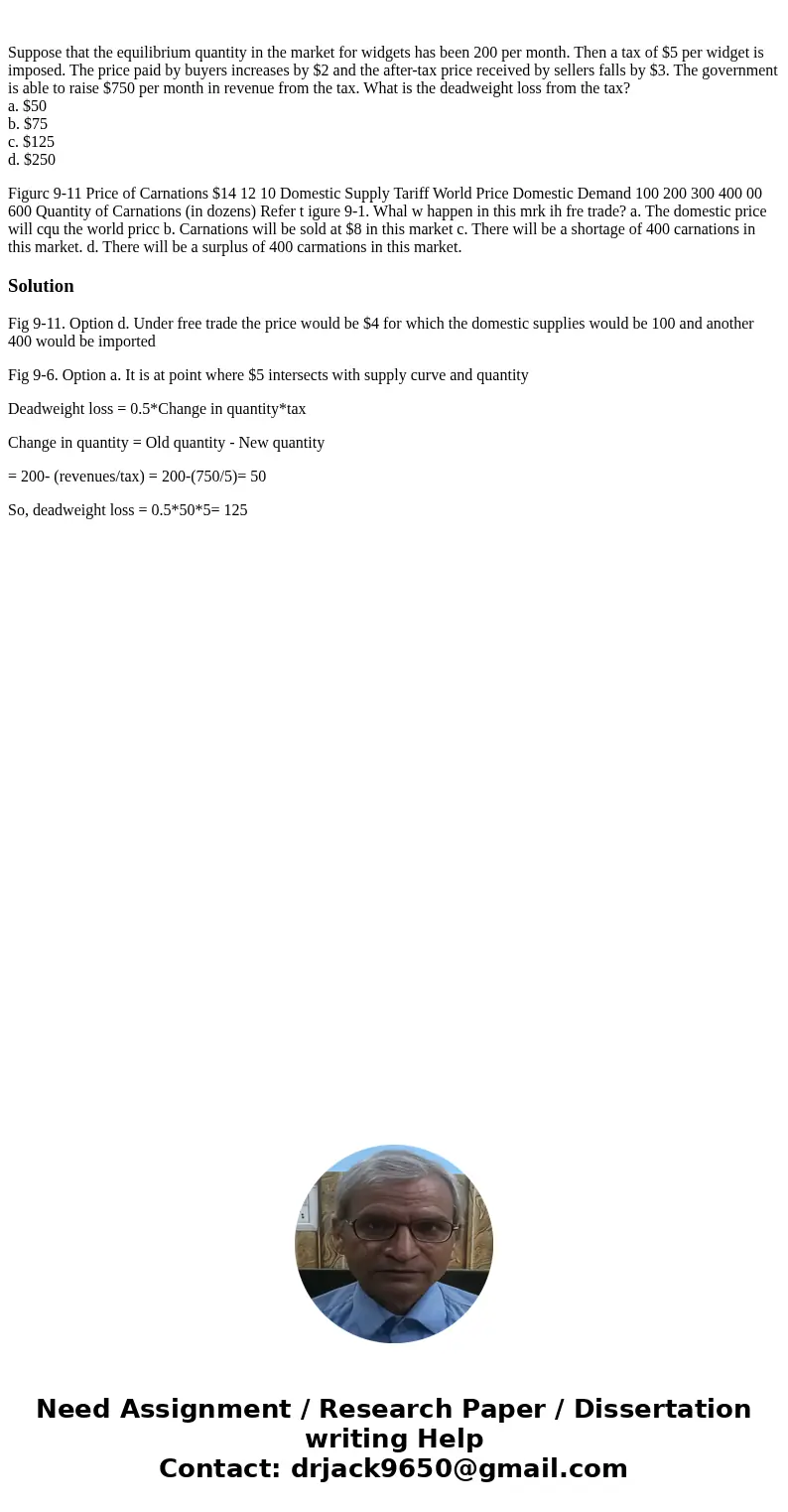Suppose that the equilibrium quantity in the market for widg
Suppose that the equilibrium quantity in the market for widgets has been 200 per month. Then a tax of $5 per widget is imposed. The price paid by buyers increases by $2 and the after-tax price received by sellers falls by $3. The government is able to raise $750 per month in revenue from the tax. What is the deadweight loss from the tax?
a. $50
b. $75
c. $125
d. $250
Solution
Fig 9-11. Option d. Under free trade the price would be $4 for which the domestic supplies would be 100 and another 400 would be imported
Fig 9-6. Option a. It is at point where $5 intersects with supply curve and quantity
Deadweight loss = 0.5*Change in quantity*tax
Change in quantity = Old quantity - New quantity
= 200- (revenues/tax) = 200-(750/5)= 50
So, deadweight loss = 0.5*50*5= 125

 Homework Sourse
Homework Sourse